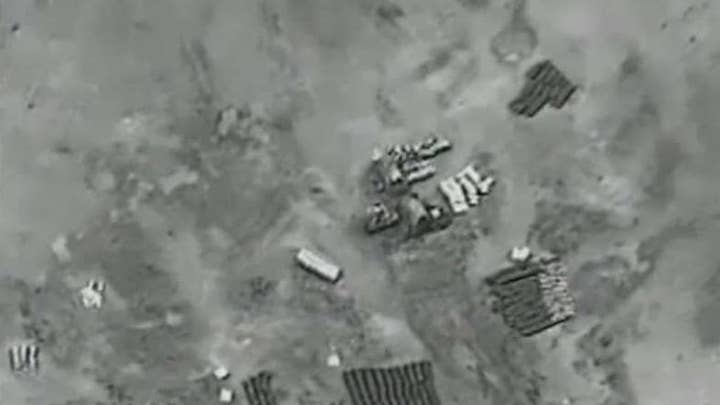Mattis believes victory in Afghanistan is still possible
Defense secretary arrives in Kabul for an unannounced trip, says elements of the Taliban are clearly interested in talking to the Afghan government.
U.S. Defense Secretary Jim Mattis, who made an unannounced visit to Kabul on Tuesday, told reporters that he believes victory is still possible and "we know there is interest" on the Taliban side to reconcile.
“In other words, it may not be that the whole Taliban comes over in one fell swoop,” he said, according to Reuters. “That may be a bridge too far to expect. But there are elements of the Taliban clearly interested in talking to the Afghan government.”
Mattis, a retired Marine general who commanded U.S. troops in southern Afghanistan in the opening weeks of the war in 2001, said getting the Taliban to reconcile en masse may be "a bridge too far." So the emphasis is on drawing in Taliban elements piecemeal.
“We’ve had some groups of Taliban – small groups – who have either started to come over or expressed an interest in talking,” Mattis said, according to Reuters.
He described this approach as an effort to "start peeling off those who are tired of fighting," after more than 16 years of war.
The country is still unsafe. The Associated Press reported that security concerns were so high that reporters traveling with Mattis were not allowed to publish stories until his party had moved from the Kabul airport to the U.S.-led military coalition's headquarters. That was the first such restriction on coverage of a Pentagon chief's visit in memory.
Mattis said he would be meeting with President Ashraf Ghani and top U.S. commanders. In late February, Ghani called on the Taliban to take part in peace talks to "save the country," offering security and incentives such as passports to insurgents who are willing to join the negotiations.
"We do look toward a victory in Afghanistan," he said, adding, "Not a military victory -- the victory will be a political reconciliation" with the Taliban, which has achieved a stalemate in recent years and shown little interest in conceding to the Kabul government."
The visit is Mattis's second since President Donald Trump announced last August that, despite his instinct to pull U.S. troops out of Afghanistan, his administration would take a more aggressive approach to the conflict, now in its 17th year.
Trump, on Jan. 29, said that he sees no basis for peace talks as long as the Taliban are "killing people left and right."
As part of an effort to bolster Afghan fighting strength, the U.S. in recent weeks sent an Army group of about 800 soldiers, accompanied by several hundred support troops, to advise the Afghans closer to the front lines.
The U.S. also shifted A-10 attack planes and other aircraft from striking Islamic State militants in Syria and Iraq to Afghanistan as part of Trump's new approach. These and other moves boosted the number of U.S. troops in Afghanistan by at least 3,500 to a total of more than 14,000.
Mattis has said that the U.S. goal is to enable Afghan forces to weaken the Taliban to the point where the Afghans can manage their own security. Put another way, the aim is to convince the insurgents they cannot win on the battlefield, thus driving them to reconcile with the Afghan government.
The Taliban stance is that talks for a conflict-ending compromise must take place with Washington, not Kabul.
The Associated Press contributed to this report


